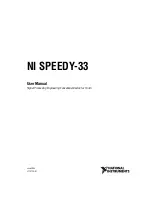
page A – 15
FM-531HD / May 2013
A P P E N D I C E S
HONK
Think Saxophone. Honk is above “mud” but below “fuzzy” and “tinny.” Honk
occurs between about 400Hz and 1,200Hz and begins to overlap “fuzzy” and “tinny”
at around 1000Hz. Usually audio in this range stands out on its own in the mix and
any enhancement should be slight because our ears are already very sensitive to these
frequencies. This frequency range is also quite delicate because much of the perceived
stereo sound field width also occurs in this range. When audio has a “honk,” “fuzzy,” or
“tinny” texture (and it’s usually a texture that one DOESN’T like), faster attack times
in the Compressor for that frequency band can help smooth things out. Another trick
is to relocate the Band 3 to Band 4 crossover to around 2,000Hz which allows Band
3 to better manage any “harshness” that might tend to pop out on certain material.
WHACK
This is the sound where percussion just “explodes.” First, note that this is much
less of an equalization issue and much more about creating a temporarily dense sound
by momentary fast compression. To achieve more “whack” it can help to speed up the
AGC or Compressor release times in Band 3. Another trick is to slow down the attack
time of the Band 3 AGC which will allow the Band 3 compressor to be more active.
This will enhance “whack.”
FUZZY/TINNY
Yes, “fuzzy” and “tinny” really are this far down in the audio spectrum! A “tinny”
sound might be described by some as a harsh midrange or too much presence instead
of something happening higher up in the audio spectrum. Both “fuzzy” and “tinny”
live between about 1,200Hz and 2,000Hz. One of the best ways to manage either is
to broadly and slightly reduce equalization in this range, or even increase the attack
time in Band 3 of the AGC and Compressor.
Sometimes there is a tradeoff between getting more “whack” and keeping “fuzzy/
tinny” at bay. Speeding up the compressor in the 1,000Hz to 1,500Hz range to get more
compression “whack” can sometimes add undesirable side effects, one of which is the
creation of what sounds like “fuzzy,” “dense,” or even “tinny.” In audio processing,
especially broadcast audio processing, everything is a tradeoff. While Wheatstone
processors provide the most wiggle room for getting the sound you hear in your head
on the air, sometimes compromises will need to be made.
CRUNCHY/EDGY
This sound is mostly caused by the need to manage the FM pre-emphasis when
aggressive processing is being applied and it usually shows up as artifacts in the
1,600Hz and 2,500Hz range. Sometimes it is best mitigated by rearranging the pro-
cessing furniture – placing the 31-band limiters after the FM pre-emphasis for in-
stance. In fact, Wheatstone is the only processing company that we are aware of that
allows the end user to move the pre-emphasis around. If a particular program format
or market dictates that a smoother mid and high frequency range is needed, placing
the pre-emphasis BEFORE the multiband limiter can help in this regard. While some
high frequency transient detail can be lost, the end result will be a very smooth and
predictable midrange and high end which may be more suitable for formats that pri-
marily target female listeners.
Summary of Contents for FM-531 HD
Page 2: ...Technical Manual Wheatstone Corporation May 2013 FM HD Digital Audio Processor FM 531hd...
Page 122: ...page A 2 FM 531HD May 2013 A P P E N D I C E S Appendix A General Specifications A 3 Contents...
Page 128: ...page A 8 FM 531HD May 2013 A P P E N D I C E S Appendix B FM 531HD GPI Interface A 9 Contents...








































